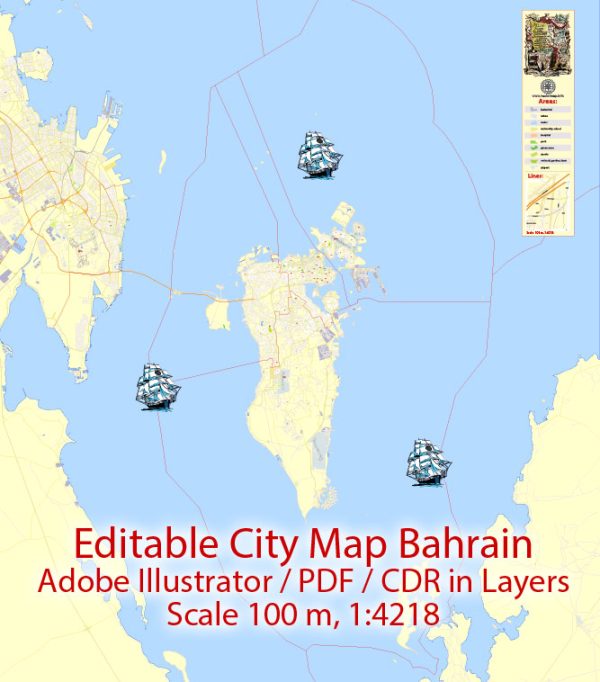Bahrain, a small island nation located in the Persian Gulf, has a rich history of urban development that dates back thousands of years. The history of urban development in Bahrain can be divided into several key periods:
- Ancient Dilmun (c. 3000 BC – 600 BC):
- Bahrain was known as Dilmun in ancient times and was a thriving trade and cultural hub. The ancient Dilmun civilization was characterized by well-planned cities, advanced irrigation systems, and a sophisticated society.
- Cities like Qal’at al-Bahrain (Bahrain Fort) were established during this period and served as important trading posts and centers of urban life.
- Islamic Period (7th century AD – 16th century AD):
- With the spread of Islam in the 7th century, Bahrain became an integral part of the Islamic world. Cities like Manama and Muharraq grew in importance as trade centers and cultural hubs.
- Bahrain’s urban development was influenced by Islamic architectural styles, with the construction of mosques, forts, and other Islamic structures.
- Portuguese and Persian Dominance (16th – 17th century):
- The 16th century saw the Portuguese invasion and occupation of Bahrain, leading to the construction of forts and other defensive structures.
- The Portuguese were later ousted by the Safavid Persians, who had an impact on the urban development of the region.
- British Influence (19th – 20th century):
- In the 19th century, Bahrain came under British influence and became a British protectorate. This period saw the establishment of a more modern administrative and urban framework.
- The British played a role in the development of infrastructure, including roads, ports, and other facilities that contributed to urban growth.
- Independence and Modernization (20th century – present):
- Bahrain gained its independence from Britain in 1971 and embarked on a path of modernization and urban development.
- The capital, Manama, saw significant growth and transformation, with the construction of modern buildings, infrastructure, and transportation networks.
- Contemporary Urban Development:
- Today, Bahrain’s urban development continues to evolve with ambitious projects like the Bahrain Financial Harbor and the Bahrain Bay development, which aim to transform the urban landscape and promote economic growth.
Bahrain’s history of urban development is a reflection of its strategic location as a crossroads of trade and culture in the Persian Gulf. It has experienced influences from various civilizations and empires over the centuries, resulting in a unique blend of architectural styles and urban planning that continues to shape the nation’s cities and infrastructure.


 Author: Kirill Shrayber, Ph.D.
Author: Kirill Shrayber, Ph.D.